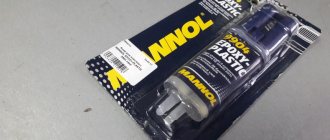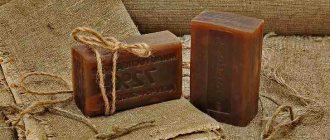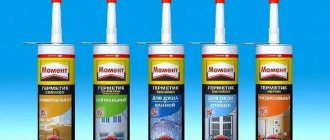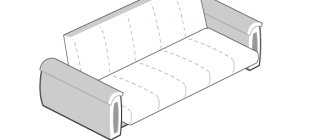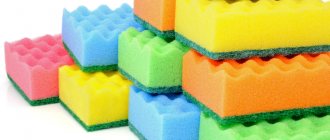One of the most durable building materials, which, however, also needs protection. We're talking about metal. To increase its service life and protect it from rust and mechanical damage, paint and varnish compositions are used that perform not only a protective, but also a decorative function. In order for the coating to hold firmly and maintain an attractive appearance for a long time, free from treacherous rust stains, metal surfaces are pre-primed. If you spend just 10 minutes reading this article, you will be able to get a general idea of what types of metal primers currently exist, how they are applied, where they are used and how they work, as well as which ones are popular and what to consider, choosing the appropriate primer option.
What is a metal primer?
Answering this question, first of all, it should be noted that a metal primer in ready-to-use form is a suspension solution. The solvent can be different: water, oils, white spirit and other alkyd solvents.
Attention! If soils containing organic solvents are applied indoors, it must be ventilated. You should work in protective gloves, goggles and a mask.
In addition to soluble salts, there is a solid phase - a set of pigments and other fillers. Each composition has its own set of ingredients and its own characteristics, which determine where this soil is used.
Metal profile primer
When priming, both components that change the characteristics of metals (the ability to interact) and their oxides (rust reduction), and the hard film that the hardened primer forms can serve as surface protection. Priming solutions can be produced in one-component ready-made form or in two-component form. In the latter case, hardeners for film formation are added to the base compositions immediately before work.
Metal profile primer
Many primer coatings for metal surfaces can serve not only as protection, but also as an excellent base for subsequent topcoats. Anti-corrosion primers-enamels are also being produced and are becoming increasingly popular. These self-sufficient compositions have such important decorative features as color variety and the ability to choose the degree of gloss from matte to glossy.
To make it easier to choose primers and enamels for metal surfaces, in the next chapter we will give a short overview of their types.
Preparation for priming
Before starting to process metal surfaces, they must be cleaned. Dust, dirt, old paint, varnish or enamel - all this can be removed using convenient means at hand (metal brushes, abrasive brushes, spatula, etc.). If the metal structure being treated has already undergone corrosion, then the primer can be applied only after using the converter. Use paint softener to remove dried paint. It also contains anti-corrosion additives. After complete cleaning, the outer coating should be thoroughly washed and sanded. Large metal structures are polished with special machines. For small exterior work, use sandpaper of a suitable grain size and lint-free cotton cloth. The next step is degreasing the surface. It is carried out immediately before the priming process. The most suitable for this purpose are: White spirit, gasoline and other mixtures of similar composition. Degreasing is necessary for uniform coating of the metal and its maximum adhesion to the anti-corrosion mixture. If the surface has few defects with a greasy base, then you can limit yourself to local processing.
Priming process
In order to take into account all the nuances and do high-quality work, you need to master priming “in theory”: application, characteristics and material consumption. You need to prepare convenient tools, take care of your own safety measures, and become familiar with how to store the primer if you don’t use all of it.
Available means
The choice of tool for external application of primer depends on the form of release of the material, the relief of the metal coating, and its area. Possible options:
- · the roller is convenient to use for processing large and smooth products. It is easy for them to distribute the mixture of any consistency. The roller ensures economical application of the material;
- · It is advisable to purchase a brush if you need to prime a small external metal structure or treat hard-to-reach places. In other cases, its use will lead to increased material consumption and time;
- · spray guns come in different sizes and power, so they can be used to apply primer to any surface. They allow this type of external work to be carried out quickly, economically and with the highest quality.
A building materials store may offer you a primer solution in an aerosol can. This is a convenient option, but due to its low capacity it is unprofitable when it comes to covering a large metal structure. Regardless of the type of future work (external or internal), do not forget to purchase gloves, goggles and a respirator.
Applying primer
Correct distribution of the anti-corrosion mixture over the outer surface of the metal structure will avoid its overuse and obtain the required uniform protective layer of primer. Follow these guidelines:
- work at temperatures from -10°С to +27°С;
- Apply the solution in a thin layer. This facilitates its penetration into all irregularities and microcracks, rapid drying, and the creation of a durable film;
- Applying each subsequent layer is possible only after the previous one has completely dried. The number of layers depends on the location of the external metal structure, its operating conditions (the more severe they are, the more material will be needed);
- the final decorative finishing should be carried out within the next few days after the primer has dried. Otherwise, the outer surface of the product will begin to become covered with dust, which will significantly reduce the adhesion of the finishing material to the coating.
Remember: the importance of taking breaks during priming is solely due to the need for the protective material to dry completely. It must be purchased in advance in the required volume to avoid downtime. The information on its packaging will help you calculate the required amount of the selected primer: “Consumption per 1 m2.” By the way, if a frost-resistant composition is used, then its application should be preceded by the distribution of a moisture-repellent primer mixture.
Storage of soil mixture
Any type of paint or primer should be stored in a container with a tightly closed lid. They should not be left near heating systems, electrical appliances, or fire sources. It is recommended to store in places where direct sunlight does not penetrate, the temperature does not exceed average values, and ventilation air flows are provided. The finished mixture will gradually thicken in the container - it can be diluted with a solvent if necessary.
What types of primers are there for metal?
The answer to this question will depend on different evaluation criteria. Firstly, the release form. As mentioned earlier, the primer can be one-component or two-component. Two-component primers may not be so convenient to use, but among them there are completely unique ones with unique properties. For example, ship paint primer is an enamel primer of the Politex brand. Some of its modifications are even used to cover the hulls of ships that sail in ice conditions. One-component primers can be produced:
- as a solution in jars of different capacities;
- like spray cans.
Aerosol packaging tends to be more expensive.
Not long ago, a powder primer also appeared - a dry homogenized mixture: epoxy and polyester resin, pigments and additives. This primer has enhanced anti-corrosion protection. However, applying it at home will be problematic, since application requires special equipment and high-tech methods.
Primer treatment for metal
The second and main way to classify soils by metal is their composition.
For different soils, different solvents and different soluble and insoluble suspended pigments and fillers can be used. Table 1. The most common types of anti-rust primers.
| Name of soils | Compound | Application and properties | Flaws |
| Phosphating | Orthophosphoric acid | For galvanized steel and non-ferrous metals, good for fire retardant coatings | Not very strong corrosion protection |
| Transformers (primers) | Surfactants - for deep penetration | Softens and removes rust | Requires supplementation with passivation |
| Passivating | Chromic acid salts | Prevents metal oxidation | Lack of Cr salts has the opposite effect |
| Insulating | Zinc white and other film-forming elements | Do not allow moisture to reach the metal | Short-lived effect |
| Tread | Metal pigments up to 90%, resin | They cement rust and form a durable film. | Epoxy compounds are not suitable for painting |
| Inhibitory | Water or oil, oxidation inhibitors | Prevents corrosion even in aggressive environments | Toxicity of cheap compounds |
| Alkyd | Alkyd polymers | Universal protection, excellent adhesion | Longer drying time |
A relatively new type is zinc-containing primer, which can be classified as a protective compound. The zinc content in it is 95-96%. In the zinc-iron galvanic couple, the more active zinc serves as protection. The base of the primer can be polyurethane, epoxy, alkyd, acrylic.
Primer treatment for metal with a roller
Of all the anti-corrosion primers listed in the table, alkyd compounds are especially worth noting, since they are now the most in demand and have the largest number of modifications suitable for a wide variety of applications.
Features of alkyd primers for metal
The undoubted advantages of alkyd primers for protecting metal surfaces include the following properties:
- High resistance to mechanical and chemical influences.
- Alkyd primer is an excellent antiseptic. This is important, since mold and other types of fungi can settle on metal surfaces.
- Excellent adhesion. Alkyd primers hold many topcoats firmly. This can be alkyd and acrylic paint, nitro paint, PVA glue and much more.
- Alkyd primer is quite heat-resistant, and in the case of some compositions even heat-resistant. At the same time, it tolerates significant temperature changes. With its help you can reliably cover home heating radiators. For example, a thermal primer such as NOVAX GOODHIM primer-enamel is suitable. The protection will be especially reliable if high-temperature water-based acrylic enamel for GOODHIM radiators is then applied as a finishing coating, which retains its best performance at temperatures up to +100 degrees, with a short-term increase to +150.
- Drying speed. In many cases, alkyd primer contains white spirit as a solvent, which, although it requires precautions, is not a highly toxic composition. This type of primer does not dry quickly. However, there are also quick-drying primers such as perchlorovinyl, which dries in one hour, polyvinyl acetate, which dries in half an hour, and others.
- Increased water resistance. This feature is used in the production of alkyd-urethane primers-enamels, with the help of which automobile and other transport equipment, including its water-based varieties, are protected.
- Highly decorative. Alkyd primer for metal, especially one produced directly on a varnish base, does not have to be colorless. It can be white, black, gray, brown, red, red-brown, yellow and any other color. As in the case of acrylic paints, the primer for metal can be white for tinting in pastel colors or transparent for tinting in rich colors.
Attention! You should always remember about the fire hazard of alkyd soils. The best fire protection measure for them is fire retardant paint applied as a topcoat.
Choosing paint for metal
Traditionally, oil paints were used to paint metals. Now, with the advent of modern primers, you can use acrylic paints, both regular and those that are diluted with water, as well as paints on epoxy and alkyd bases. But don't use regular water-based paint, you need those that contain anti-corrosion additives, or better yet, paints that contain rust converters and form a dense coating.
Such paints, of course, cost more than conventional alkyd or oil paints, but you will save money due to their durability. These paints have high elasticity, which does not change over time.
Why do you need a primer for metal?
If we answer this question in detail, it turns out that treating metal surfaces with a special primer can give the following positive effects:
- Protection of metals from corrosion. This is especially true for ferrous metals, which include cast iron, steel and other alloys containing iron.
- Improved adhesion. Any enamel or varnish on a primer will stick much stronger and will not crumble under the influence of bad climate. This is especially important for galvanized iron and steel, as well as for non-ferrous metals and their alloys, which are difficult to rust, but even more difficult to coat without a primer.
- Like any other primer, metal primer masks minor defects, that is, smoothes the surface. This circumstance leads to significant savings in finishing enamels and varnishes, which, as a rule, are more expensive than primers.
- In addition to protection against corrosion and other chemical activity, metal primers enhance their mechanical strength.
Thus, if you choose the right primer, taking into account all the features of interior or exterior work, you can significantly extend the service life and improve the aesthetic performance of building structures, plumbing equipment, cars and other objects made of metal around us.
Spraying primer on metal
Modifying primers against corrosion
Today, the paint and varnish market sells a large selection of primers that transform rust and provide excellent protective qualities.
Experts take into account the high demand for problems of slow destruction of metal structures resulting from rust. That is why they are developing various formulations that can prevent this phenomenon.
Most often, phosphoric acid is chosen as the base component. Some brands may contain hydroxycarboxylic acids, tannin and other components. When they interact with each other, they form a chemical reaction, due to which traces of rust dissolve, and in their place a dense coating is formed.
They are divided into several groups:
- Stabilizing types. Thanks to them, it is possible to accelerate the transformation process in the zone of unstable iron oxide hydrates. They transform the stable component of magnetite;
- Converters of corrosive products. Upon contact with a metal base, the main substances begin to destroy rust, resulting in the formation of phosphate salts;
- Penetrocin emulsions. This category has high penetrating properties. When applied evenly on an iron base, a chemical reaction is observed, during which a dense shell appears;
- Soil modifiers. Thanks to it, it is possible to create a reliable base before applying paintwork.
Such components can be selected only if the amount of rust or scale does not exceed more than 35% of the total area of the metal structure.
In other cases, there is no 100% guarantee that a positive result will be achieved. There are compounds that can be used to treat rusty areas. It is recommended to properly prepare the surface first. To do this, large elements of rusty traces are removed from it, and then primer is applied.
How to apply primer on metal?
Before answering this question directly, it is necessary to recall the correct choice of the necessary product, which should suit:
- for black and/or non-ferrous metal;
- under external conditions: indoors or outdoors; the possibility of special chemical or mechanical influences; the likelihood of increased humidity, temperature, etc.;
- for painting with a finishing coat.
You should always carefully read the manufacturer's instructions, which describe in detail: how to apply the primer correctly, material consumption, what methods are used, whether it can be applied over rust, how long it takes to dry, what the total thickness of the layer should be, what can be used to dilute the working solution if necessary. It is most often necessary to dilute the primer so that it can be applied with a spray gun, because in this case more liquid mixtures are needed than, for example, when applied with a brush.
Before applying primer, the surface must be completely cleaned and degreased.
Do not forget that transformative compounds are not independent. With their help, rust can be easily removed, but then a passivating primer must be applied to the surface.
The primer is applied to metal surfaces with a brush, roller or spray. Each layer should be as thin as possible: two successively applied layers are always stronger than one of equal final thickness. Before painting with the finishing coat, the primer must dry thoroughly. If necessary, it can be given some roughness using sandpaper.
Spraying primer on metal
All of the above activities cannot be called labor-intensive. It’s better to definitely do them. If you are ready to take a risk and check what happens without a primer, you will be in for an unpleasant surprise, as well as additional material and moral costs.
Can I prime over water-based paint?
Most often under water-based paint
use a universal primer.
It can be
applied to any type of putty.
... Form a film that reduces paint
and ensures uniform absorption; Thanks to the presence of an antiseptic in the composition, it prevents the formation of fungus on the surface of walls and ceilings.
Interesting materials:
How much frost can chickens withstand? What kind of frost can spunbond withstand? What kind of frost can thuja withstand? How powerful should a jigsaw be? How powerful should a compressor be for painting a car? What power should a laser be for cutting plywood? How powerful should a table fan be? How powerful should a subwoofer be? What power should an electric furnace have? What power should the socket for the oven have?
What is the best primer for metal? Popular manufacturers
There is no clear answer to the question of which primer is best for metal. Because, firstly, primers for metal have different purposes. Secondly, preferences vary from person to person. The best primer is the one that meets the desired requirements better than all others.
Tikkurila OTEX
SPECIAL METAL Primer
NOVAX Anticor “3 in 1” glossy
GF – 021
PF – 021
Nerzhamet
PRODECOR
Spray KUDO
The production of primers that protect metal surfaces is constantly developing, both abroad and within the country.
Domestic manufacturers are constantly improving, using both foreign experience and their own unique developments. And as this process intensifies, buyers are increasingly choosing domestic goods. Table 2. Popular primers for metal from leading manufacturers
| Soil name | Brand and manufacturers | Type | Average price in rubles per kg |
| Tikkurila OTEX | Tikkurila | Alkyd | 794 |
| SPECIAL METAL Primer | Hammerite | Transformative | 1650 |
| GF – 021 | TEX, LAKRA | Insulating | 120 – 129 |
| PF – 021 | SpetsEmal LLC, etc. | Alkyd | 84 |
| Nerzhamet | "KrasCo" | Alkyd-urethane “3 in 1” | 320 – 360 |
| PRODECOR | "Russian Paints" | Alkyd | 211 — 307 |
| Spray KUDO | "Russian technical aerosols" | Alkyd | 300 |
| NOVAX Anticor “3 in 1” glossy | GOODHIM | Alkyd | 334 |
It is worth noting that reviews of the presented products are approximately equally positive, regardless of whether it is a foreign or domestic brand. At the same time, the prices offered by domestic manufacturers are much more pleasant.
Where can I buy the right primer for metal?
The answer to this question is a continuation of the previous topic. You can now easily find out how much a particular metal primer costs and what its rating is from the Internet. Just scroll through the pages of online stores and study the current prices for the products you need. To compare the results, all numbers must be reduced to a common denominator. That is, the comparison should not include the price per package, but the price per 1 kg or price per liter.
Attention! Since Russia is one of those countries where there are still a lot of counterfeit goods, including metal primers, you should only buy the latter in reliable stores.
A particularly reliable way to purchase is through the website of the manufacturing company. On our website you can find out all the technical details of the product, as well as the real cost - what retail and wholesale will cost. All prices without intermediary surcharges. The company works using the most modern materials from the best suppliers, as well as advanced technologies, including organizational ones, such as contract manufacturing. GOODHIM specialists are always ready to dialogue with clients and can choose the most advantageous offer for each.
